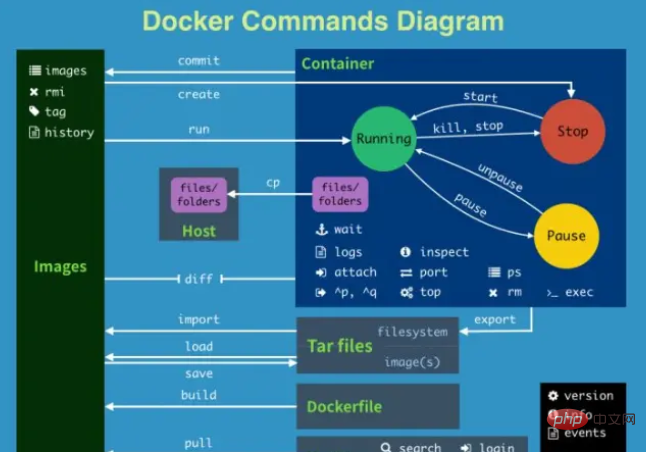
In docker, images can be used to package the software running environment and software developed based on the running environment; the image is the prerequisite for Docker to run the container, and the warehouse is the place where the image is stored, and it is the core of Docker. In addition to providing containers In addition to the programs, libraries, resources, configuration and other files required for runtime, it also contains some configuration parameters prepared for runtime.

The operating environment of this tutorial: linux7.3 system, docker version 19.03, Dell G3 computer.
What exactly is an image?
An image is a lightweight, executable independent software package used to package the software running environment and software developed based on the running environment. It contains all the content required to run a certain software. Includes code, runtime, libraries, environment variables, and configuration files.
The uses of docker images:
1. Images are the prerequisite for Docker to run containers. The warehouse is the place where images are stored, and it is the core of Docker;
2. The image can be regarded as a special file system. In addition to providing the programs, libraries, resources, configuration and other files required for the container to run, it also contains some configuration parameters prepared for the runtime.
Why is there a Docker image?
In the Paas era, it provides a capability called "hosted application". When deploying an application, it is deployed manually or by writing some scripts. The problem faced by such deployment is that the cloud and local environments are consistent.
Docker projects are not much different from Cloud Foundry containers. They are both "sandboxes" implemented using Cgroups and Namespace. The different functions are docker project Docker images. The reason why Paas is very troublesome is that the packaging process for each application is cumbersome for users and requires configuration and modification, which is very laborious.
However, the Docker image was designed to solve this small packaging function and suddenly became famous overnight. So, you might say that the Docker image is a compressed package. Yes, you guessed it, it is like a compressed package file. How does it solve the cloud and local consistency issues faced in the Paas era? It's very simple. It makes an image into a complete operating system with all the files and the corresponding directory structure. Such a compressed package is exactly the same as the operating system used in your local and test environment.
Docker is an open source application container engine that allows developers to package their applications and dependency packages into a portable image and then publish it to any popular Linux or Windows operating system machine. Virtualization can be achieved. Containers completely use the sandbox mechanism and will not have any interfaces with each other.

It can be seen that Docker contains three basic concepts, namely Image, Container and Repository. The image is the prerequisite for Docker to run the container. The warehouse is the place where the image is stored. It can be seen that the image is the core of Docker.
Back to the topic, the Docker image can be regarded as a special file system. In addition to providing the programs, libraries, resources, configuration and other files required for the container to run, it also contains some files prepared for the runtime. Some configuration parameters (such as anonymous volumes, environment variables, users, etc.). The image does not contain any dynamic data, and its content will not be changed after it is built.
Recommended learning: "docker video tutorial"
The above is the detailed content of What docker images can do. For more information, please follow other related articles on the PHP Chinese website!